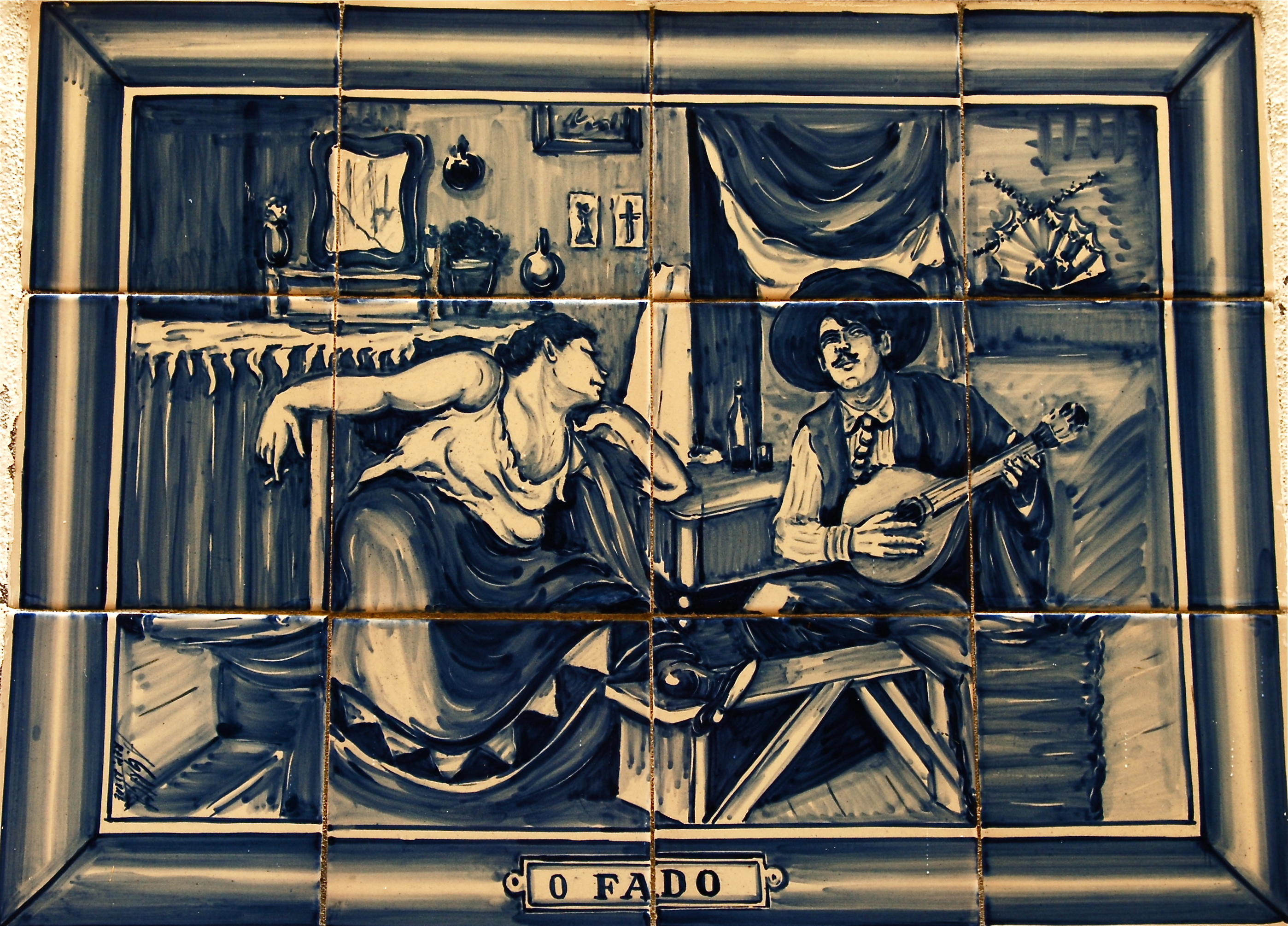Think you know the guitar history? Think again. This world-famous instrument has a history that stretches back thousands of years – and its story is far more fascinating than you might imagine. From B.B. King’s soulful blues to Jimi Hendrix’s mind-blowing riffs, the guitar has shaped the soundtrack of our lives through generations.
A central rosette, six strings, integrated tuning pegs, a handle with frets, a central sound hole – these may seem simple, but they hide centuries of evolution.
Did you know where it all began? Was the guitar born in India, Uzbekistan, the Arab world, or Spain? In this article, we’ll uncover the myths, legends, and real history behind the guitar. This is not the usual boring history class that will make you yawn–we promise you that you’ll find it interesting as you read on. Get ready to discover a tale as rich and resonant as the instrument itself.
Strap up and travel through the fascinating history of the guitar.
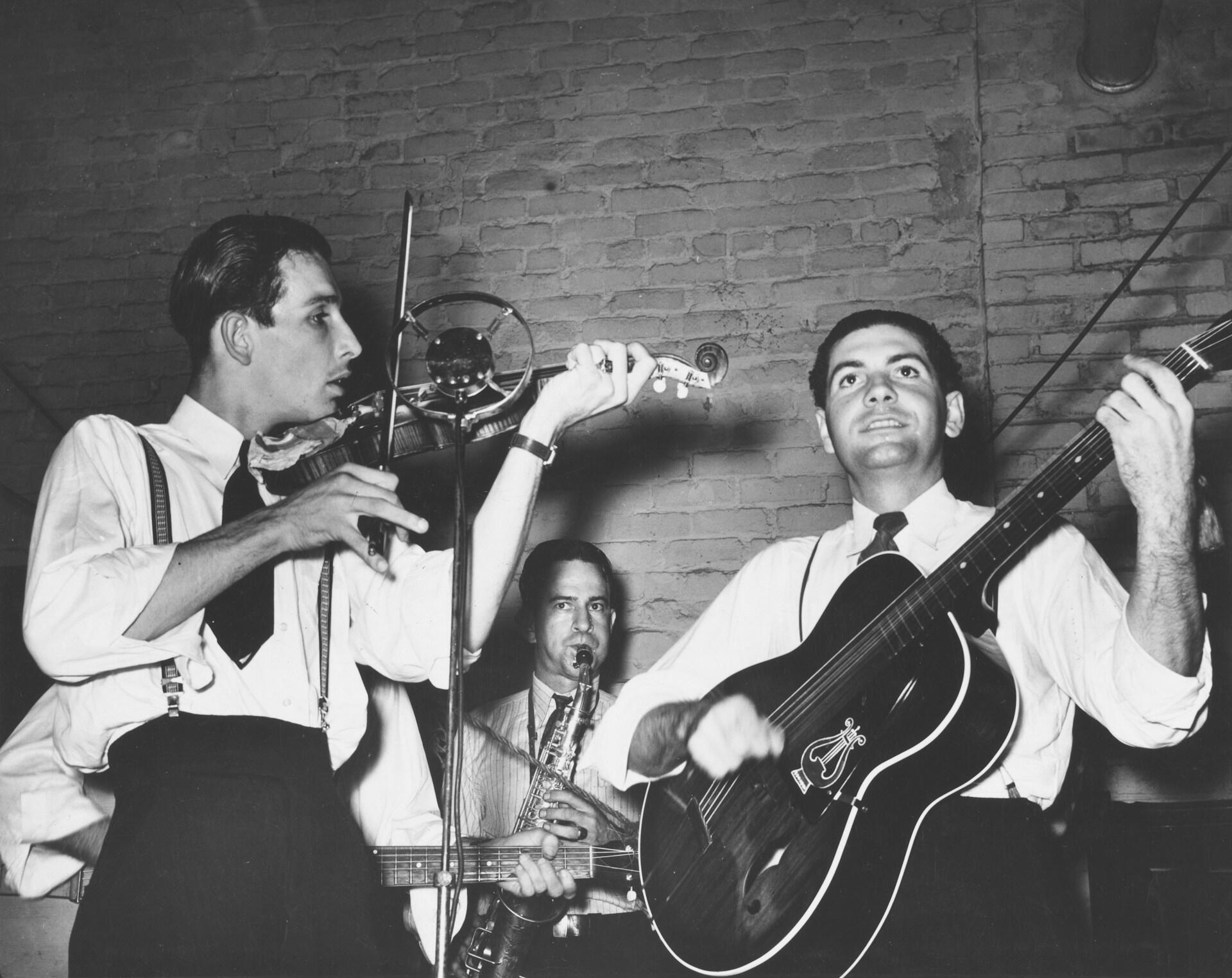

How did Guitar Get Its Name?
It’s said that the Guitar likely derived from the Spanish name ‘Guitarra Latina’, which was used to refer to chordophones, stringed instruments. We also learnt that there’s no definitive evidence to say when the guitar was found or invented due to the lack of records in those days. Sigh…
Some also believed that the origin of the name can be traced back to Sanskrit-derived languages such as Bangali, Hindi, and Urdu, from Northern India, and modern Persian from Central Asia. An analysis of Sanskrit and Persian (both Old and Modern) shows that many string instruments were named using the word târ (meaning “string”).
Another source suggests that the word “guitar” comes from the ancient Greek word kithara. Like I mentioned earlier, there are a few variations of its origin story, but at least this gives us an idea of how the name might have been thought or come about.
Interestingly, the instruments were named by adding a prefix that indicated the number of strings they had. For example, the Sanskrit words dvi, tri, chatur, and pancha (two, three, four, five) became do, se, char, and panj in modern Persian. Some of these instruments still exist today, such as the dotâr in Turkistan and the setâr in Iran.
Well, it’s fascinating to learn how they thought of naming the instruments back then, isn’t it?
Want to learn how the guitar has evolved through the years? Read the full story here.
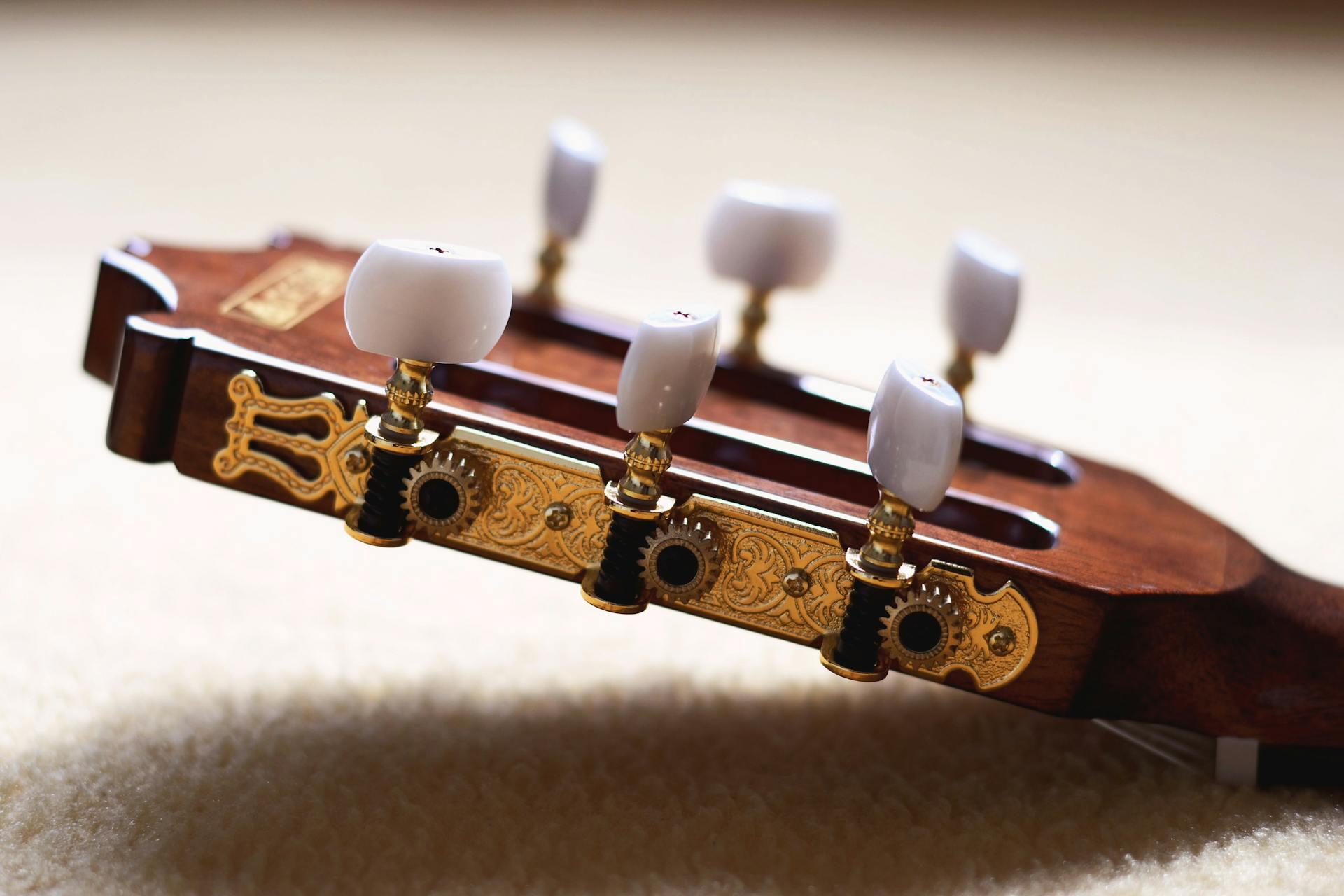
Anatomy of the Guitar Through History
It’s undeniable that the guitar has undergone a lot of physical changes over the years. From cithara, lute, to modern classical guitars – it has gone through a lot of makeovers. Let’s take a look at them, shall we?
Strings
Let’s start with the most important body part of a guitar, the strings. Back in the day, the ancestors of the guitar had animal gut strings. These were made using the “catgut strings”, the intestinal lining of sheep or cattle. Alternatives such as silk strings and strings made of plant fibres were also used.
In the 19th century, steel guitar strings became common, producing a louder, brighter sound with greater durability. It later became the choice for blues, folk, and country music. Later, in the 20th century, nylon strings were introduced as a cost-effective option to gut strings.
Acoustic Body
Acoustic guitars feature a hollow wooden body that acts as a natural sound amplifier. When strings are plucked, vibrations transfer through the soundboard and resonate inside the hollow chamber to produce a rich tone.
Bracing & Construction
- Fan Bracing – Commonly used in classical and nylon-string guitars since the 19th century. Its fan-shaped layout allows the top to vibrate more freely, producing a warm, balanced tone.
- Ladder Bracing – An older method, found in early steel-string guitars and some vintage instruments. Its simple horizontal design creates a raw, punchy, mid-focused tone.
- X-Bracing – Introduced by Martin Guitars in the mid-19th century, this design became the standard for steel-string acoustics. The X shape balances strength with flexibility, enabling louder projection and brighter tones.
- Scalloped Bracing (a variation of X-bracing) – The wood is carved out from the interior braces, particularly the lower half of the X-braces. This makes the soundboard more responsive, often enhancing bass, sustain, and overall resonance.
Neck & Fretboard
Neck-joint designs have evolved over time – from early simple dovetail, linear dovetail, to modern-day designs such as bolt-on, set, and through-necks.
Frets
Guitars transitioned from tied gut or wooden frets to metal frets, a change driven by the harder strings introduced in later designs. The modern standard became the T-fret, patented in 1929, offering cleaner contact and improved intonation.
Electric Bodies & Pickups
As electric guitars emerged, they shifted toward solid or semi-hollow designs, which don't rely on acoustic resonance. Instead, electric guitars use electromagnetic pickups – magnets with wire coils that transform string vibrations into an electrical signal. The first successful pickups were patented in 1937, paving the way for amplification and giving players precise control over volume and tone.

Guitar Tabs: A Modern Tool in Guitar History
Guitar tablatures (tabs) have made playing the guitar for beginners more accessible than ever. Unlike traditional sheet music, which requires some music theory knowledge, tabs show players exactly where to place their fingers on the fretboard of an acoustic guitar, electric guitar, or classical guitar. Tabs are often called a beginner-friendly way to start learning because they simplify the process and reduce the need for complex theory.
Even though classical guitarists often prefer standard sheet music, tablature was widely used for plucked instruments like the lute, theorbo, and vihuela during the Renaissance and Baroque eras. One of the earliest known examples is the Pesaro Manuscript (around the late 1400s to early 1500s), which used letters (not numbers) to mark frets. Players also had to pay attention to tuning, as different instruments and regions favoured slightly different setups.
Here are some types of tablatures you might encounter:
- French tablature – used letters (e.g., A for open, B for first fret), lines for strings.
- Italian tablature – numbers instead of letters; sometimes the string order is flipped compared to modern guitar tab.
- German tablature – used special symbols for each string/fret combination; more complex and less common today.
Rhythm in old tablatures is written above the tab rows, showing how fast or slow notes are played. Besides the guitar, instruments such as the Lute, the Renaissance guitar, the Baroque lute, the theorbo, and the Baroque guitar used tab. Each instrument’s tab is adapted to its number of strings. For example, a six-stringed guitar will have 6 lines, etc.
Over time, new techniques for playing and tuning the guitar emerged, and tabs were called on to help players learn these innovations. Makers like Gibson also refined designs, including bass models, making them easier to use and play for contemporary musicians.
Was theInstrument of the Egyptian Singer Har-Mose the First Guitar in the World?
In a remote time, even very remote, under the reign of Queen Hatshepsut - that is to say, 3,500 years ago - lived an Egyptian singer named Har-Mose. She used a primitive type of 3-stringed guitar made of a polished cedar box surrounded by leather.
The Egyptians began to use this instrument, which quickly became very popular. It was then introduced into Europe by the Mesopotamians. The teaching of this instrument and the first guitar lessons appeared around this time.
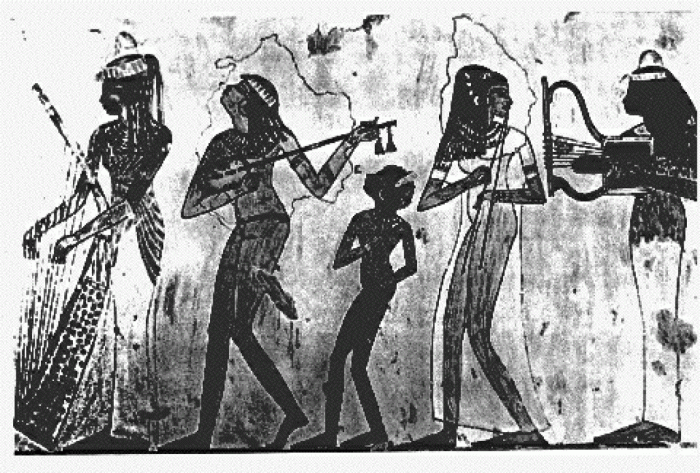
This "original guitar" was successively embellished with a fourth (to reach unison), then a fifth string (in Europe), and finally a sixth in the seventeenth century. Unfortunately for Har-Mose, whose instrument was fairly rudimentary, the guitar evidently became much more sophisticated during this time.
The guitar, as we now know, even those of the greatest guitarists, is of Egyptian origin!
The Lute of Mesopotamia, a Grandfather to Jimi Hendrix's Guitar?
The lute has a semi-pear soundboard, a small bridge like a guitar, a fretboard and many strings. There are a number of commonalities.
The dôtar, a two-stringed lute with a long neck, was also seen as the origin of the modern guitar, to which more and more strings were progressively added.
At first a shepherd's instrument, it became a noble instrument in the scholarly music of the nineteenth century in Uzbekistan or Turkmenistan.
In reality, the lute is a string instrument among many others, and guitarists don't like the idea that this is a guitar at all! Just because something has strings doesn't make it a guitar!

A Very Old Lady: An Ancestor of the Guitar Found in Ancient Rome?
In Antiquity, we used an instrument called the cithara (from the Greek "kithara"), a musical instrument with plucked strings. It consists of a soundboard on which were fixed strings of decreasing size, in the sense that they were increasingly fine.
With the right hand, one plucks chords while the left hand serves to pinch the frets.
For a long time, this string instrument (like the others) was made out of animal gut. (For your information, it was not until 1940 that the strings went from those of animal origin to nylon.)
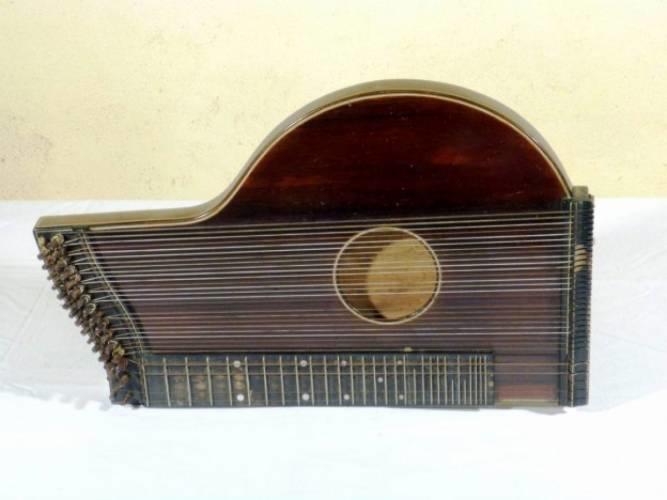
It is said that the zither was imported into Spain by the Moors, and that to this instrument a neck was added to form the guitar as we know it.
Michael Kasha's Point of View and His Contributions to the Guitar
Dr Kasha, a researcher in molecular physics and a guitar enthusiast, defines the guitar as "a plucked string instrument played with fingers or a plectrum, having a long fretted neck, a flat wooden soundboard, a head and a flat back, with, most of the time, curved flanks.”
He's the first researcher to have wondered about the following question: how to play the guitar?
Although the lute and the guitar have common ancestors, the guitar is not a derivative of the lute, he says. According to him, the Greeks themselves would have borrowed the term "zither" from the Persians, who had a 4-string musical instrument called the "chartar".
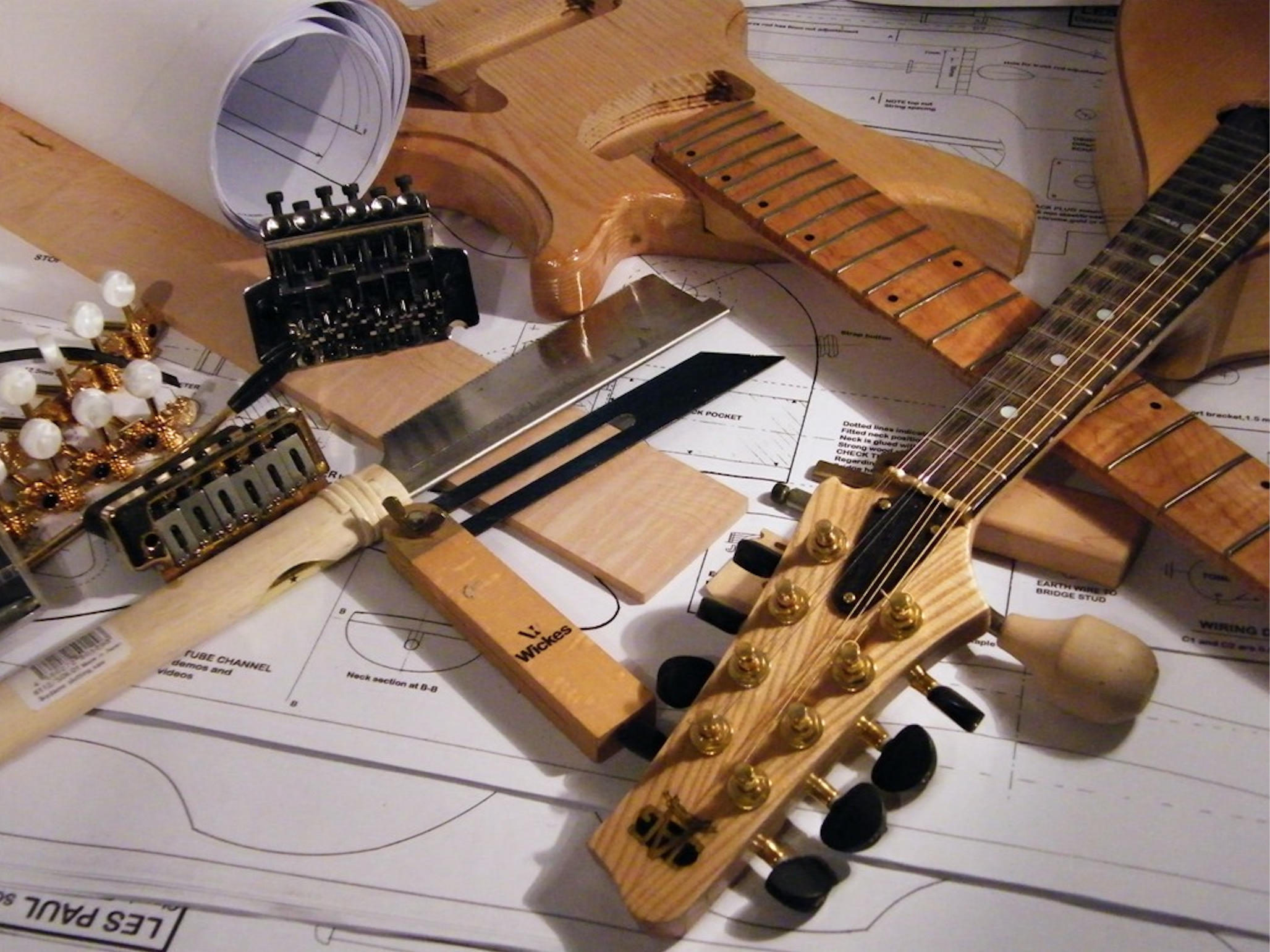
The Romans have often been criticised for saying that they stole everything from the Greeks. But the Greeks, too, may have looked around their neighbour's home!
Michael Kasha studied the vibratory behaviour of soundboards, and Gibson used his research to develop the Dear Series Mark, with an asymmetric bridge and a special dam. This model, not hugely marketable, was quickly abandoned.
Even today, studies continue to reveal the benefits of playing the guitar – proof that the instrument’s impact goes far beyond music alone
15th-19th Centuries: From the First Old Guitars to the Modern Guitar
At the time of its elaboration, the Middle Ages guitar was characterised by the following elements:
- A fairly short neck
- 8 frets maximum (there are now 22 or 24 nuts on an electric guitar neck!)
- Double strings
At this time, two forms of guitar are known:
- The Saracen guitar: it's recognised by its domed case and double strings; it's a sort of lute with a long handle.
- The Latin guitar: it has a flat case and strings made out of guts, it's the closest we know to the guitars we have today.
The Renaissance marks the appearance of a family of small string instruments (cordophones) in Spain, under the name of vihuela.
After all, who can resist the allure of a guitar’s alluring sound? Discover our top list of guitar-based songs.
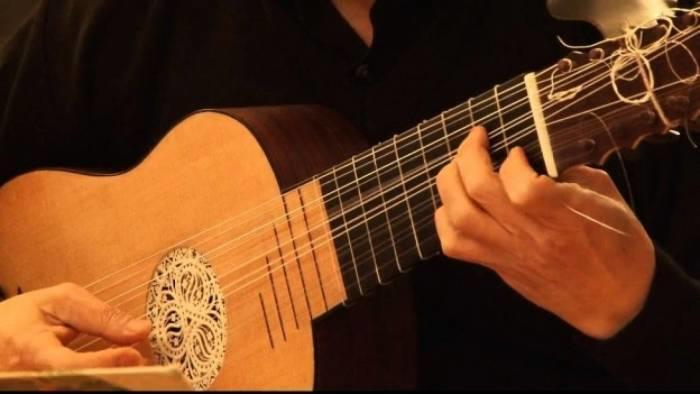
The guitarra, relatively small, has four double strings while the Vihuela de Mano has six.
To date, only four authentic Vihuelas de Mano have been preserved because of their great fragility, including 2 in Paris (Musée Jacquemart-André and Musée de la musique).
In the sixteenth century, the vihuela eventually gave way to the Spanish guitar.
It was at this time that the 5-string instrument made its entrance with a standard tuning in A, D, G, B and E. As we composed these instruments, we began to look for more variations, which led to an increasing number of frets: from 8 to 10 and then to 12.
In the seventeenth century, it was the Italian luthier, Antonio Giacomo Stradivari, who added a sixth string to the guitar. His competitors and successors would later do the same, while opting for six single strings rather than six pairs of strings.
And so we got E, A, D, G, B, E - the standard tuning of the guitar today!
During the nineteenth century, the shape of the soundbox evolved and made a huge leap in the evolution of this magical instrument. Around 1850, the Spanish manufacturer, Antonio Torres, decided to change the proportions of the soundbox and to renew the materials he used. This made it possible to improve the sound as well as its projection.
One can say that he is the inventor of the classical guitar. Therefore, a Spanish man! They are not quite wrong to declare that the guitar is Spanish, then. Another preconceived idea about the guitar!
The guitar is an instrument that has often been "snubbed” by the high sphere of classical music.
The first college guitar course in the UK was given by John Williams (outside of his classic repertoire, Williams played for Kate Bush, David Bowie, and many, many others). This guitar lesson was given for the first time in 1965.
Therefore, and contrary to popular belief, most older guitar heroes have a classical training.
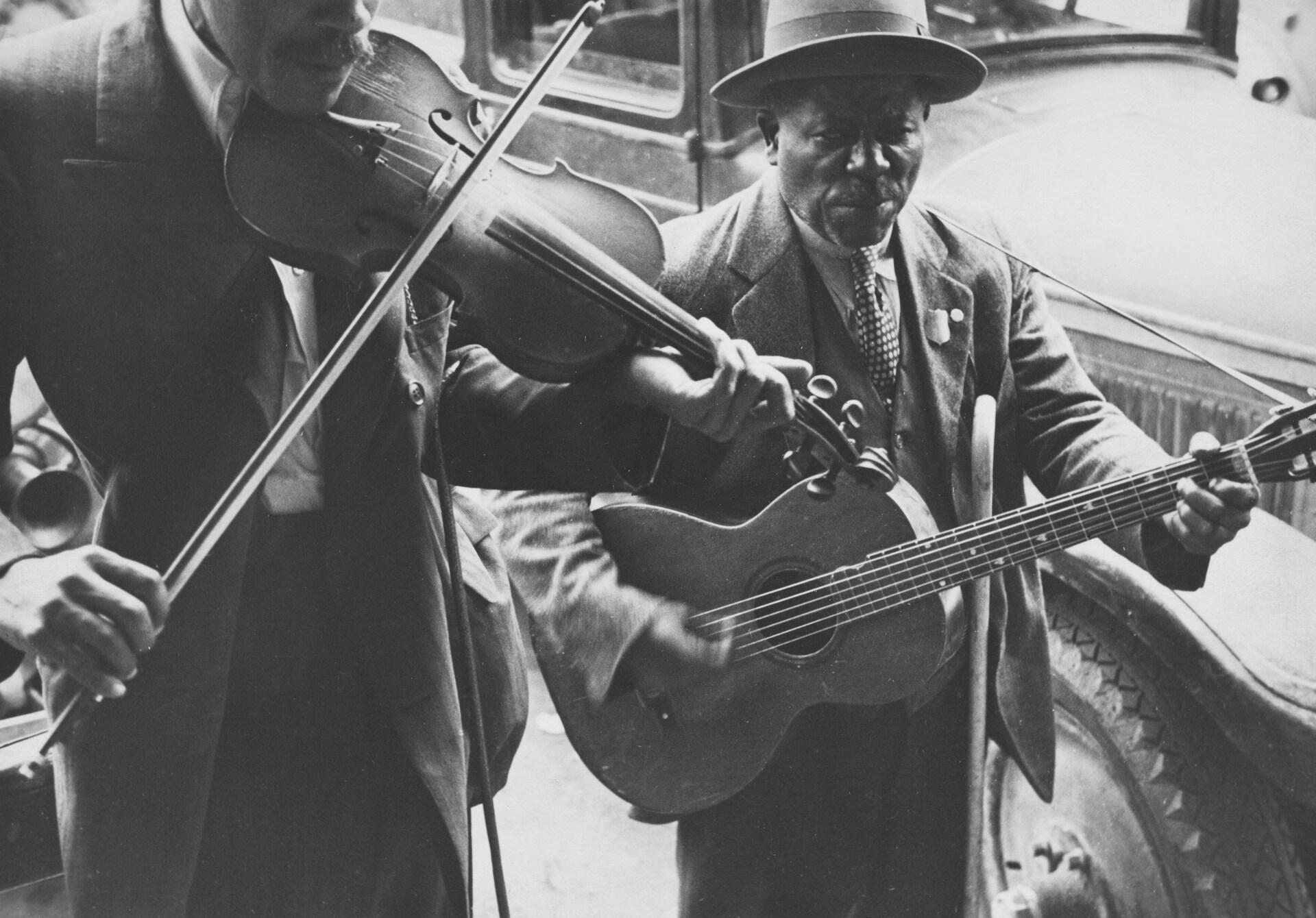
By the Way, How Did the Electric Guitar Appear?
So, if that was the classical guitar, what about the electric? When did that start being played?
The Birth of Electric Guitars
In the 1900s, they started to use steel ropes. They offer a better resonance but also have a lot of tension on the neck. This allows you to play the guitar faster.
Christian FrederickMartin, a German who settled in the United States, developed the technique of "brace" in X. From then on, other luthiers and artists have made their own contributions.
- Orville Gibson was inspired by the cello so that the bridge no longer touched the strings and offered a greater resonance.
- Lloyd Loar introduced the F-holes and a floating vibrato (also commonly called the Floyd Rose).
- 1920: We add pickups to the jazz guitar.
- It was in 1930 that the electric guitar (a guitar equipped with tungsten microphones) began to be marketed by Rickenbacker.
- However, the beginning of the real electric guitar is in 1936 with Gibson and its 504 models ES150.
The solid body (full body of the electric guitar) appeared around this time at Audiovox, Rickenbacker and Epiphone. The descendants of the inventors soon started to make the Les Paul and Leo Fender, which were named after the producers.
It was in 1950 that the general public discovered the first solid body guitar by Leo Fender, the Fender Telecaster.
Nowadays, Les Paul (a solid body with two humbuckers) and Stratocaster with its two horns (on which you can change the parts as much as you wish) remain the main forms of electric guitar.
These iconic electric guitars shaped the sound of modern music – and for talented players, they also open doors to a variety of guitar-related careers.
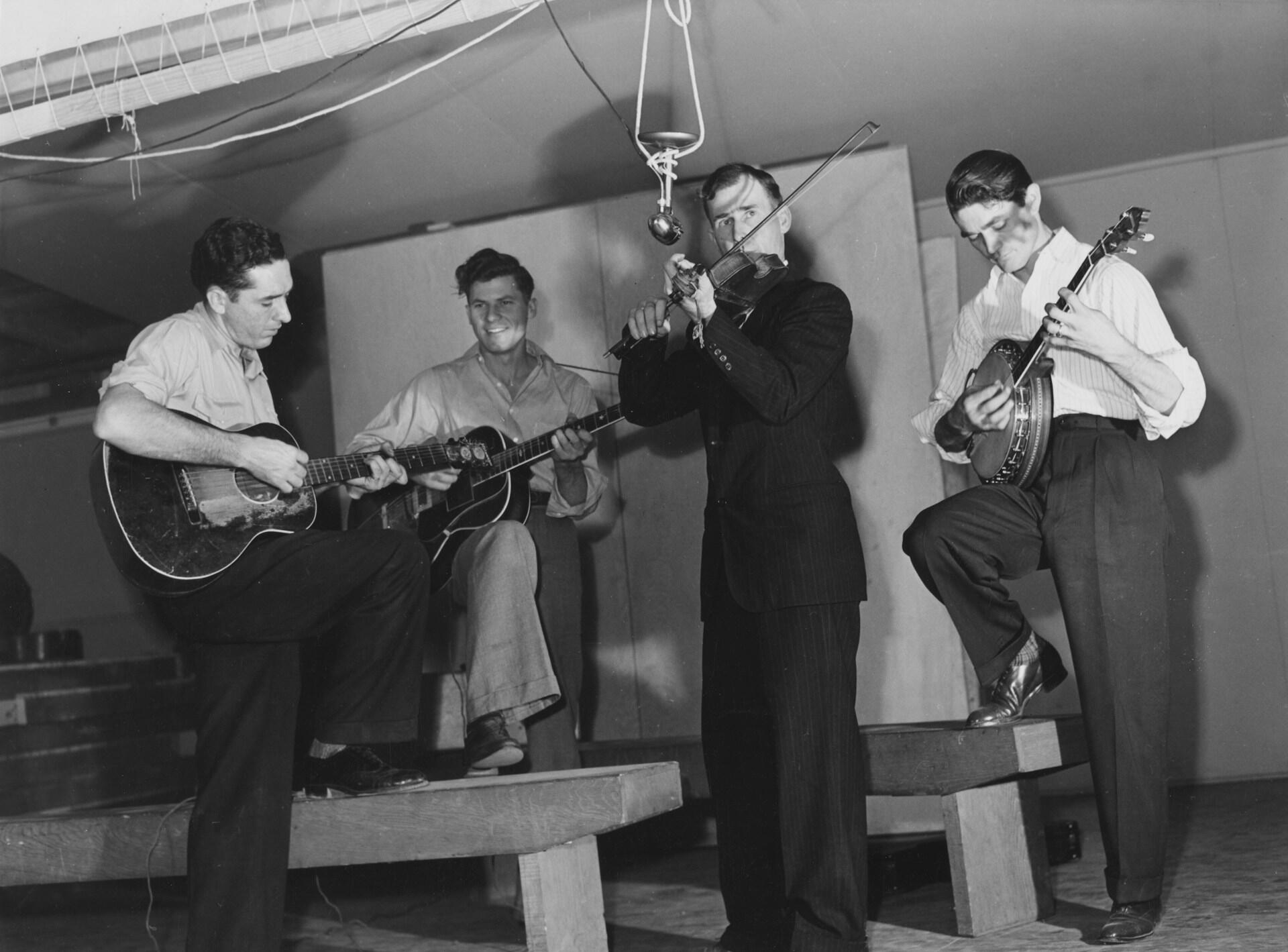
The Guitar, a Low-Grade Instrument?
The guitar was considered inferior to the lute at the time of its appearance in the fifteenth century.
However, geniuses of composition have succeeded in making this instrument an object of lust and fantasy! What's more, playing guitar is good for the health of guitarists!
Thank you, rock, jazz, blues and different guitar styles!
Just take a look at the pricing of some artists' guitars:
- The top record is held by a white Fender Stratocaster bearing the autographs of 19 artists from Mick Jagger to Brian Adams. Funds raised in 2005, $ 2.7 million, helped the victims of the 2004 tsunami.
- The best known is none other than Jimi Hendrix's guitar, that very one that made Woodstock go wild. It was sold for 2 million dollars.
- Bob Marley's Washburn Custom was valued at between $1.2 million and $2 million. It was given by the artist to his favourite technician, Gary Carlsen, who founded the charity "Different Journeys, One Destination".
- The classical and acoustic guitars sell a little cheaper, but Eric Clapton's CF Martin & Co of 1939 still costs the price of 791,500 dollars ...
We bet that the lute, now seldom used and relegated to the rank of museum piece, has not finished vibrating with jealousy!
You get the idea, the history of the guitar is vast, because it counts a crazy number of distant relatives. Building on its success, it has also integrated classrooms in the twentieth century. Take the next step in the history of the guitar and find online guitar lessons for kids.
Beyond its rich history and role in education, the guitar offers powerful personal benefits, too. In fact, science proves that playing the guitar is good for you!

Stringed Instruments are Still Used Today
The chordophone is a huge family. But we will look at the instruments that are still in use today. Most of these instruments have a history stretching way back. Today, we’re going to look at the instruments that are still widely and popularly used by many across the world.
1. Guitar
No. 1 on the list is, of course, the star of this article, the stringed instrument that is believed to be the crowd-pleaser, the guitar. It’s an instrument that is widely recognised and played by many around the world today, despite its history that dates back to the 15th century.
2. Violin
The violin, dating back to 16th-century Italy, is the highest-pitched string instrument, which became a key part of Western classical music. It has four strings tuned in fifths and is usually played with a bow, though plucking is also common. Though the violin is famously used in Western classical music, its versatility enabled it to be used in folk, jazz, and even rock. Violins come in different sizes for all ages, and they can choose between traditional acoustic violins and electric versions, which are popular in modern music.
3. Cello
The cello, developed in 16th-century Italy, is a large string instrument known for its deep, warm tone and wide range. It’s the bigger version of the violin. Similar to the violin, the cello is also a significant instrument in Western classical music. Thanks to the Cello player like Yo Yo Ma, it has reached beyond classical music to jazz and pop.
4. The Double Bass
The double bass is the largest and lowest-pitched member in the family. With deep bass tones, this instrument is a staple in orchestras, jazz ensembles, and various other music genres. Similar to the instruments before, the double bass, too, can be bowed and plucked. Although largely used in classical music, it’s also used in jazz, where the plucking method is used.
5. The Harp
The harp is known as one of the oldest types of stringed instruments. It is believed to have origins back in the ancient Mesopotamian and Egyptian cultures, and the harp we know today was developed in Europe during the 19th century. The modern concert harp has 47 strings on a large triangular frame. Although it’s largely associated with classical music, it is also used in Celtic music and other genres.
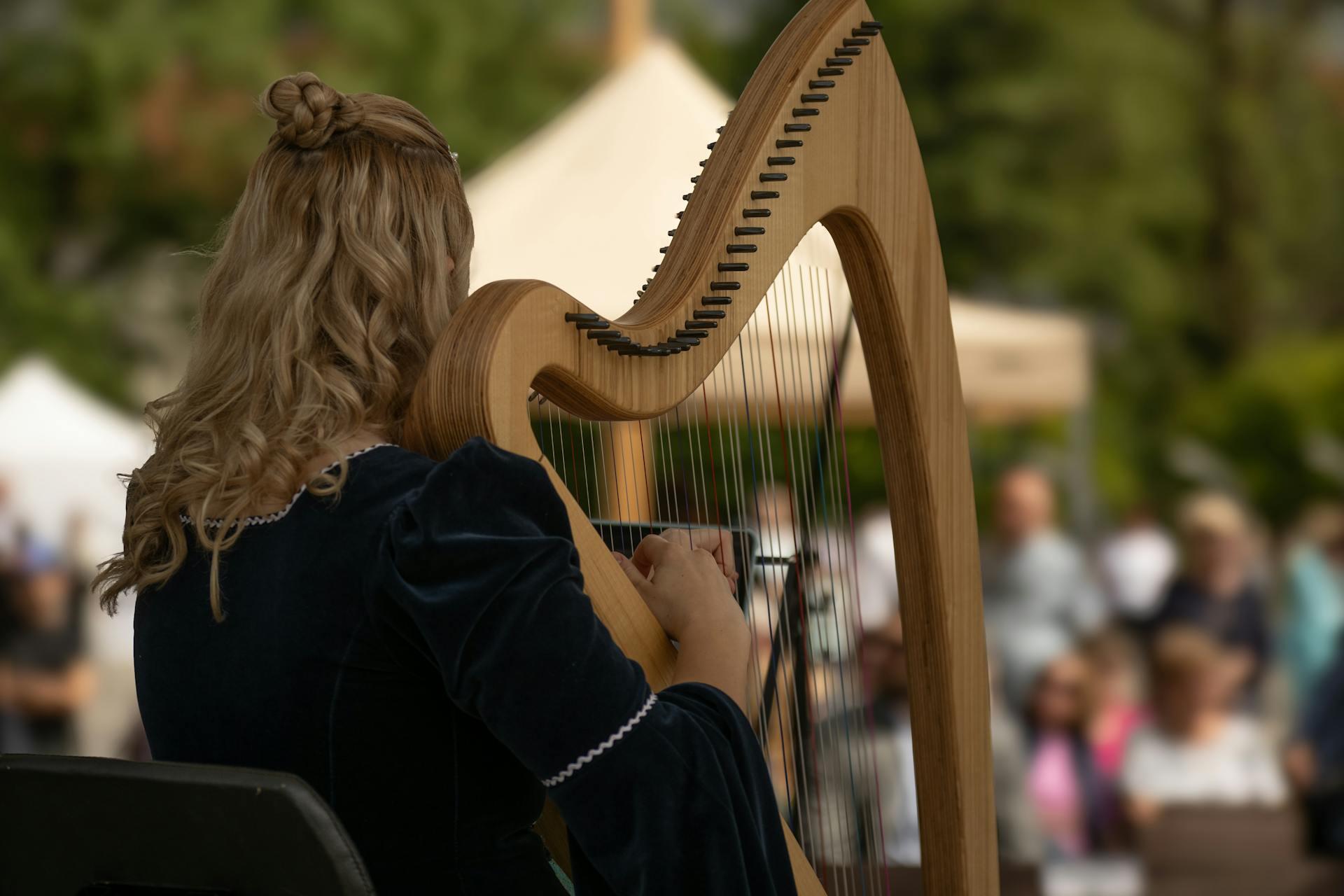
6. Lute
The lute is an ancient instrument and part of the lute family, which played a significant role in the development of modern types of stringed instruments like the guitar. Although the lute was widely used during the Renaissance and Baroque periods for its rich, resonant tone, it remains valued today in historical performance.
7. The Banjo
The banjo is a plucked string instrument with roots in West African musical traditions. It was later modified and popularised in the United States. Its circular, drum-like body with a guitar-style neck gives it a unique design. Modern Banjos typically have 4, 5 or sometimes 6 strings. Its bright and twangy sound is a staple in folk music ensembles and bluegrass bands.
8. The Mandalin
This pear-shaped instrument with 8 strings is believed to have deep roots in Italian folk music, but it also has a place in modern genres like bluegrass and country. It is common in genres like bluegrass and country, where it adds fast melodies and rhythmic strumming to ensembles.
9. The Ukulele
The ukulele is a small, four-stringed instrument from Hawaii, adapted from Portuguese string instruments. It’s known for its cheerful tone and a design that makes it a favourite string instrument for beginner and seasoned stringed instrument players. It has gained its popularity in pop and folk music worldwide. Ukuleles come in several types in different sizes, such as soprano, concert, tenor, and baritone–each offering distinct tonal qualities.
10. The Sitar
Last but not least is the Sitar. It’s an Indian classical instrument that belongs ot the types of stringed instruments found in South Asia. It has up to 21 strings, known for its complex, layered sound and its use in Indian classical music. Sitar has gained worldwide recognition, thanks to musicians like Ravi Shankar and George Harrison. It’s continued to be used in both traditional and fusion music today.
Reading about the chordophone family might make you wonder: what genres can you try on your own guitar? We’ve got you covered with an article that highlights beginner-friendly styles to try. Give it a read!
Where to Find Guitar Classes in Singapore?
After reading this history-laden article and (hopefully) being amazed by the origins of the guitars, you might be wondering – how do I get started? If you’re already thinking about hiring a Spanish or acoustic/electric tutor, well, talk about being at the right place at the right time, huh?
Good news: you are at the right place! We, at Superprof, have 22,842 verified guitar tutors specialising in guitars from all over the world. Yes, you read that right – all over the world. Whether you want to master the strings of a classical acoustic guitar, understand the body resonance of an electric model, or explore the rich tradition of Spanish styles, all you need to do is register an account with Superprof and follow these simple steps:
- Go to our website. Register an account if you haven’t.
- Type your address/postcode in the search box and hit search.
- Browse through the pool of 22,842 verified tutors. Check out their profiles, experiences, qualifications, teaching styles, and teaching modes (online or face-to-face) until you find a good match.
- Found a tutor that ticks your boxes? Drop them a message before booking a class. Even better – ask if they’re offering a FREE first session. Many of our tutors do, so it’s definitely worth checking.
- Chat with them to clear up any questions you have and make sure you’re aligned with your goals and needs.
Our tutors typically respond within a few hours (check our average reply time). That’s all! Our goal is to make learning easier and accessible to our learners in every field that they are interested to learn in. We offer over 2,000 subjects on our platform, so we can assure that you will find a tutor in Singapore, either online or in person.
So, what are you waiting for? Head over to our website now and get ready to embark on your musical journey with us today!
Oh, and before you go, don’t forget to check out what this virtuoso guitarist and founder of the iconic band, Led Zeppelin, has to say.
Let me explain something about guitar playing. Everyone's got their own character, and that's the thing that's amazed me about guitar playing since the day I first picked it up. Everyone's approach to what can come out of six strings is different from another person, but it's all valid. ― Jimmy Page

